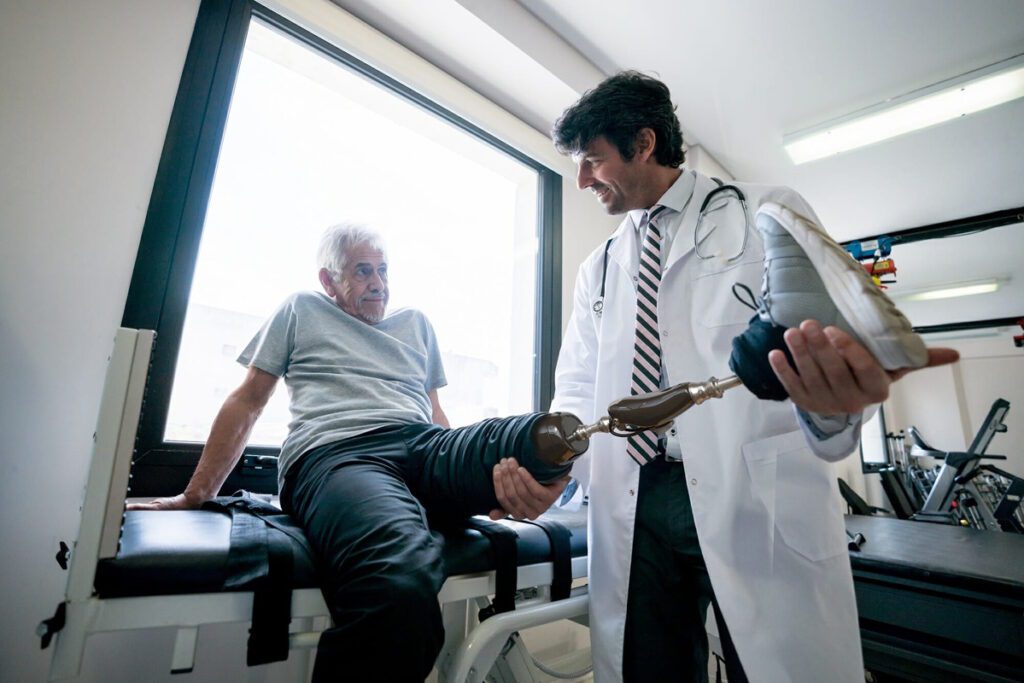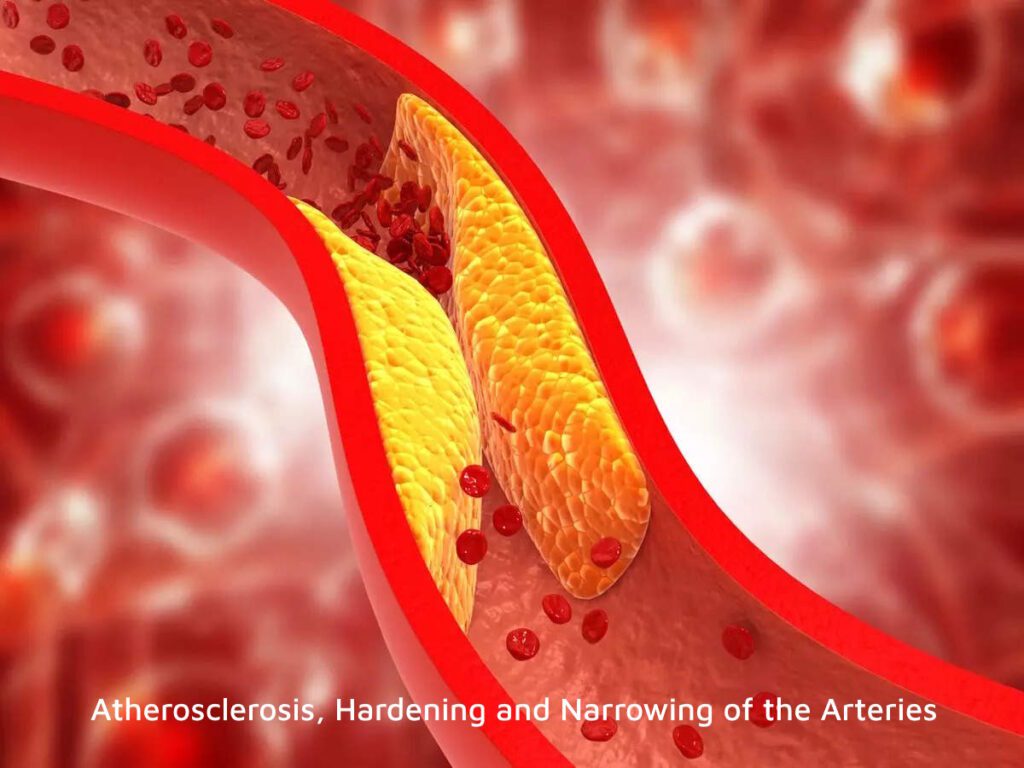Let’s Be Aware of Critical Limb Ischemia During American Heart Month
Author: StrideCare Internal Team

Throughout February heart attack survivors, their families, and those who tragically lost loved ones to heart failure support American Heart Month. While they are acutely aware of both the obvious and silent dangers of heart disease, so many others need to be reminded. That includes those who suffer from a rare but dangerous arterial condition known as critical limb ischemia. To the untrained eye, this is seemingly unrelated to heart function since the condition is characterized by severely reduced blood flow to the lower body. However, untreated critical limb ischemia can trigger a heart attack if the arteries in your extremities are severely impeded or blocked and the plaque ruptures.
Critical limb ischemia (CLI) is found in only 12% of the U.S. adult population. And yet, it is the most severe form of the more common peripheral arterial disease (PAD), which affects 8.5 million U.S. adults and 113 million people worldwide. Even without CLI, PAD can put someone at a higher risk for heart attacks, strokes, and coronary artery disease.
The good news is that choosing a healthy lifestyle and staying consistent with doctor’s visits can prevent heart issues, PAD, and its more severe counterpart, critical limb ischemia, from affecting your life or that of a loved one.
Why Arterial Patients Must Take American Heart Month Awareness Efforts Seriously
Our team at StrideCare prides itself on discussing educational and awareness efforts such as American Heart Month with our arterial patients. No, we do not specifically treat the heart. But we do diagnose and treat a variety of diseases and conditions that play a bigger role in heart disease than most people think. Per the Centers for Disease Control and Prevention (CDC), heart disease is the leading cause of death for men, women, and people of most racial and ethnic groups in the United States. In fact, someone has a heart attack in the U.S. every 40 seconds, and about 1 in 5 are silent. In other words, the damage is done, but the person isn’t aware of it.

Examples of heart disease risks include the following:
- High blood pressure
- High cholesterol
- Physical inactivity
- Obesity
- Unhealthy diets
- Smoking and secondhand smoke exposure
Most types of heart disease result from the buildup of plaque and cholesterol in arteries over time. Arteries are critical because they deliver oxygenated blood from your heart to the rest of your body. But if blood flow in the arteries of the lower extremities is significantly limited or blocked entirely, it can cause a variety of uncomfortable symptoms and lead to critical limb ischemia.
Is critical limb ischemia life-threatening? In a word—yes. According to the Cleveland Clinic, almost 1 in 3 people with CLI are forced to have a life-saving amputation. About 1 in 4 people die, most commonly from heart disease or a stroke. Patients who have critical limb ischemia may also have diabetes and a family history of high cholesterol. This may contribute to the main arteries becoming blocked.

The CDC adds that up to 4 in 10 people with PAD don’t have symptoms. But in almost every case, sluggish blood flow will progress from no symptoms to pain in one or both legs and the possibility of no blood flow (CLI).
Are You Experiencing These Symptoms?
- Pain or numbness in the feet or toes
- Changes in appearance of extremities (shiny, smooth, or dry skin)
- Cold extremities
- Open sores or ulcers that don’t heal
- No pulse or weak pulse in legs and feet
- Dry, discolored skin
- Thick toenails
Treating Arterial Diseases Can Improve Heart Health
When it comes to your heart, treating arterial disease symptoms like those from critical limb ischemia as early as possible is important. If you are experiencing any debilitating symptoms above, a vascular specialist at StrideCare can help. We’ll start with a thorough assessment followed by testing to help us understand your condition’s severity and suggest a treatment plan that fits your needs.

Examples of minimally invasive treatments we rely on to treat our patients include:
Angioplasty — A balloon system for narrowed or blocked arteries. It is one of the first procedures recommended for patients with PAD and critical limb ischemia. With this minimally invasive procedure, your doctor inserts a catheter through a small incision and advances it to the affected artery. A balloon system is inflated several times to widen the passage and let blood flow freely.
Atherectomy — This procedure uses advanced laser technology to clear away plaque and buildup in large blood vessels, including the coronary artery, which is responsible for bringing oxygenated blood to the heart. You might hear the word laser and think surgery, but in reality, an atherectomy is also minimally invasive and is typically combined with balloon angioplasty and stenting.
Stenting — This procedure involves using a mesh tube to keep a closed-off blood vessel or artery open for the long term. It is performed with angioplasty so that the balloon can open the artery up and clear out any buildup before the stent is placed. This is a relatively gentle procedure that ensures the blockage cannot reoccur.
It should go without saying that living a healthier lifestyle is also important. This includes choosing healthier eating habits, exercising more, and quitting smoking.
StrideCare Supports American Heart Month and Critical Limb Ischemia Patients
It’s important to recognize critical limb ischemia and PAD early and seek help from a medical professional who can guide you on your next steps. StrideCare continues to be a leader in performing leading-edge procedures to treat these conditions—all while providing compassionate patient care.
Prior to starting any new treatment or questions regarding a medical condition, always seek the advice of your doctor or other qualified health provider. This information is not a substitute for professional medical advice.
StrideCare serves the South Texas area including Houston, San Antonio, Austin, Round Rock, Bastrop, Brushy Creek, Cedar Park, Converse, Georgetown, Hutto, Kyle, Leander, Marble Falls, New Braunfels, Pasadena, Pearland, Pflugerville, San Marcos, Schertz, Houston, Sugar Land, Katy, Webster, Bay City, Clear Lake, Lake Jackson, The Woodlands, Universal City, Spring, Kingwood, Stafford, Conroe, Texas City, Cypress, League City, Bellaire, and more.


